Illuminated Manuscripts
The Fitzwilliam Museum, the museum of the spectacular collections of the University of Cambridge, created the ‘Illuminated Manuscripts’ project ahead of the Museum’s centenary exhibition in 2016. Keepthinking led the design and development of this digital platform, a multilayered digital resource to explore medieval and Renaissance manuscripts.
CMS, Information Architecture, Wireframes (UX/UI), Art Direction, Development, Accessibility
Visit website
Opening a window onto the world of medieval and Renaissance painting and calligraphy
To create a digital resource in order to share the museum’s rich manuscript collections and research with diverse audiences, which includes engaging functionalities to enable interaction in real-time with the visualisations of the manuscript folios.
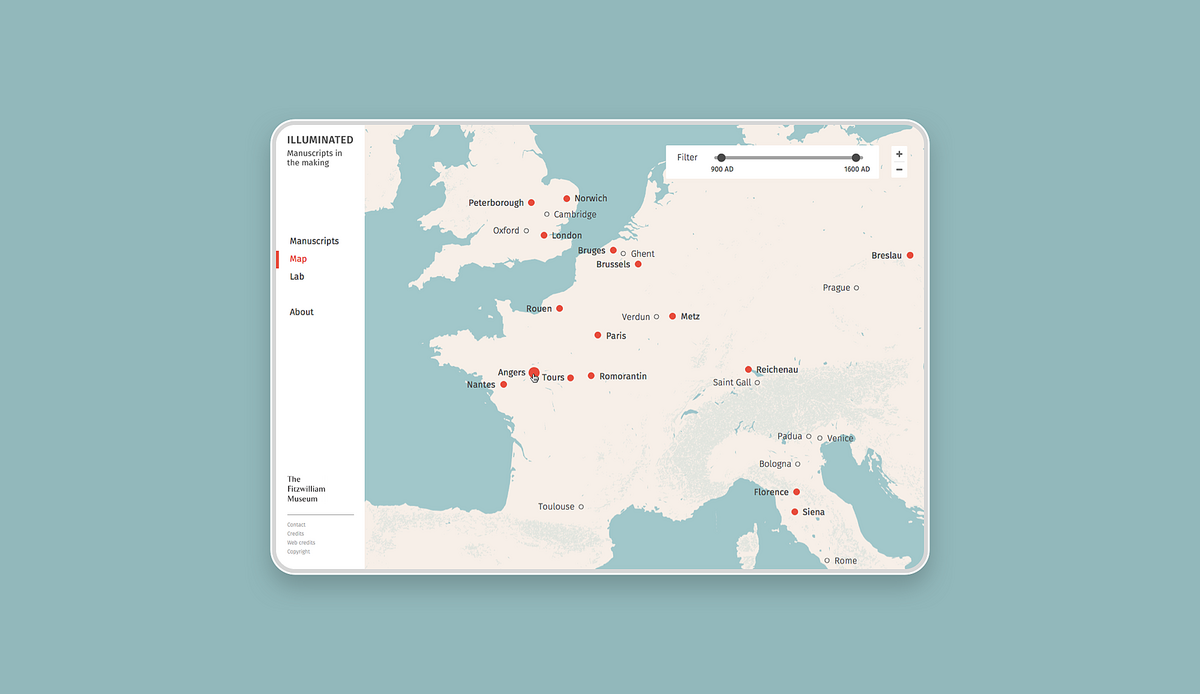
Understanding the audiences
Illuminated Manuscripts addresses the needs of a variety of audiences by varying levels of detail and type of content. These audiences include academic experts, students in the arts, humanities and sciences, interested enthusiasts and visitors to the Fitzwilliam Museum.
Our work began by proposing a structure that offers multiple ways to discover the manuscripts and their content, whilst at the same time allowing for journeys to start in one place and continue laterally – discovering related content by category, theme, artist, etc. The way to achieve this is to structure the content according to multiple categories and parameters - which is why we proposed using our Qi Content Management System, which allows the management of multiple ontologies and categories linking to the objects.
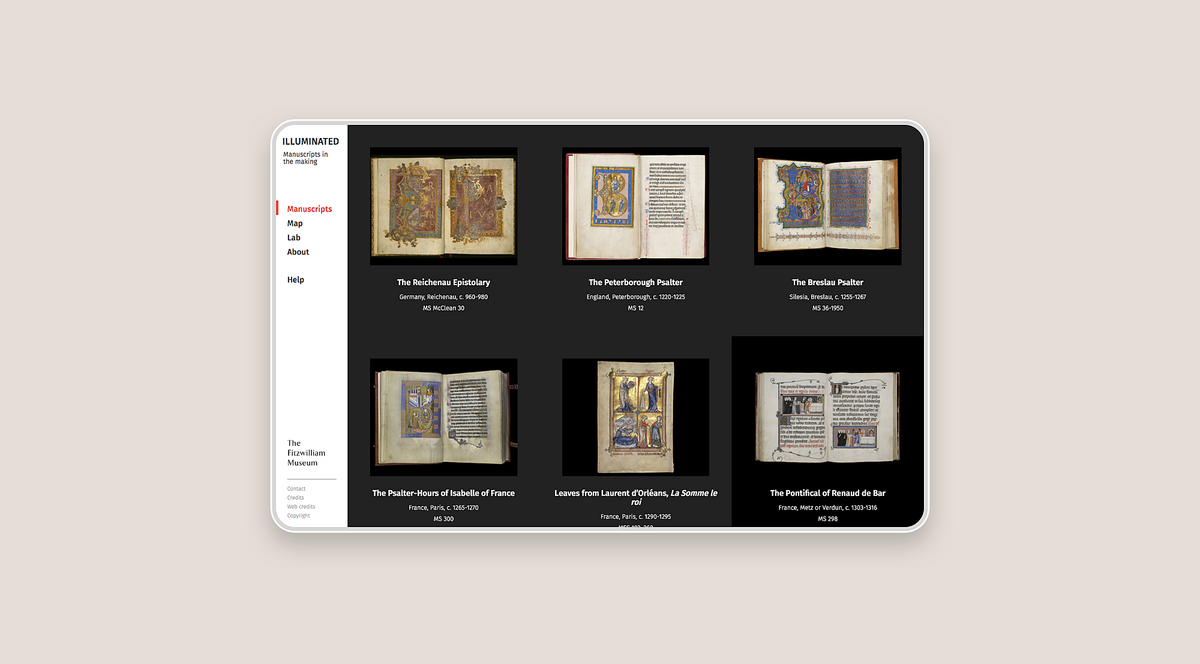
Manuscripts
Within each manuscript, the user is able to explore individual folios. The audience is introduced to the manuscript, they can discover about the artists, owners and type of materials and techniques involved. They are also able to learn about the texts and images within the manuscripts and description and contents.
Hotspots: We introduced core engaging functionalities to enable further interaction with the manuscripts. These included features such as toggling hotspots which display detailed information on elements of the page, an infrared view of each manuscript page and zooming high-quality images and sharing on social media.
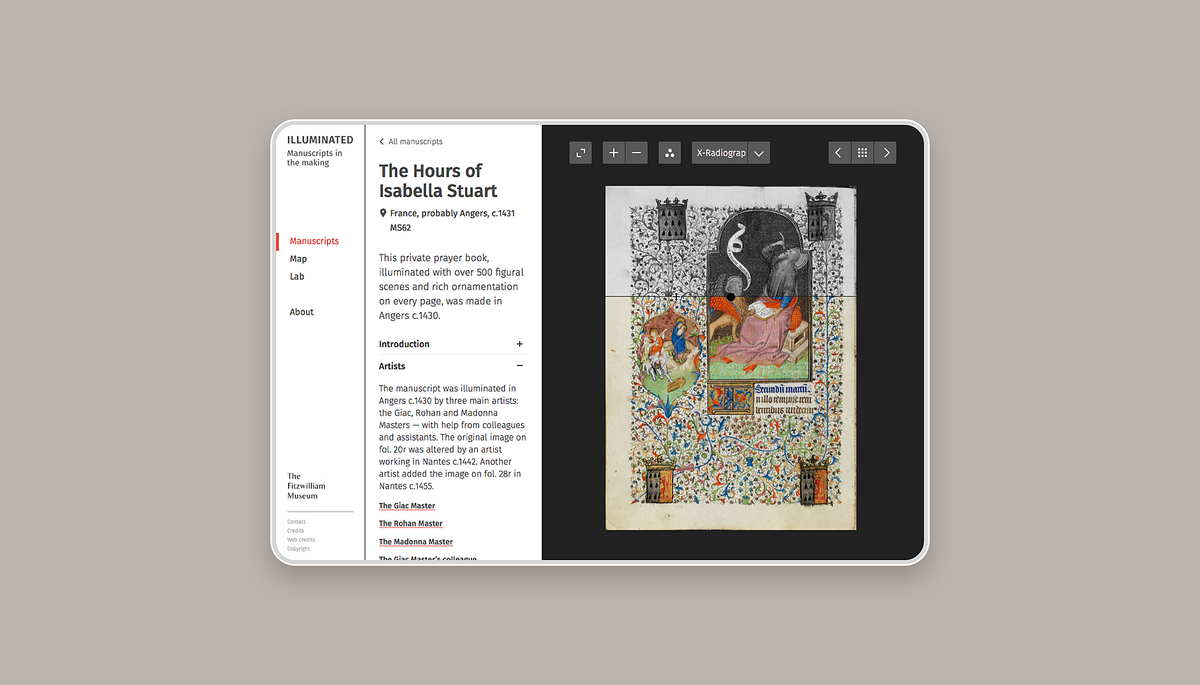
Lab
The 'Lab' section includes a technical analysis of the methods used within the illuminated manuscripts, and an overview of artist's materials and techniques. Here the user can find out about Infrared reflectography, Macro-XRF scanning, Near-infrared images, Optical microscopy, Raman spectroscopy, UV-vis-NIR reflectance spectroscopy, X-ray fluorescence spectroscopy and relevant links to manuscript pages containing interactive features of these methods.
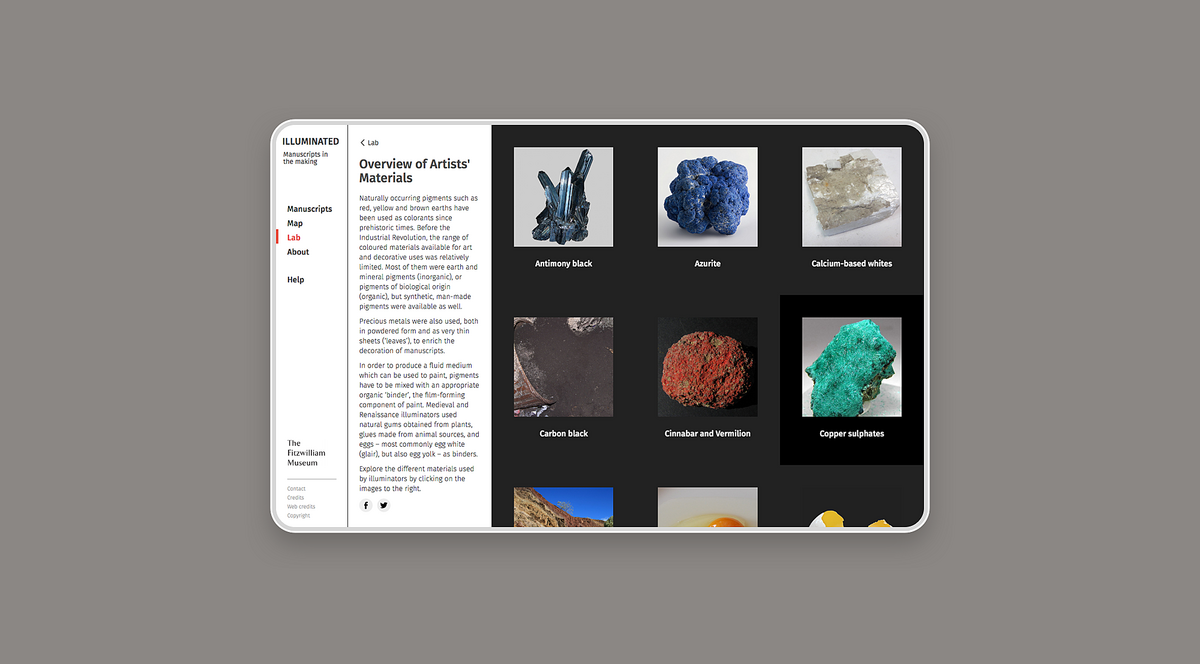
Summary
The digital resource created in the project played an essential part in the Fitzwilliam Museum’s bicentenary exhibition in 2016, which displayed the Museum’s finest illuminated manuscripts to international audiences.
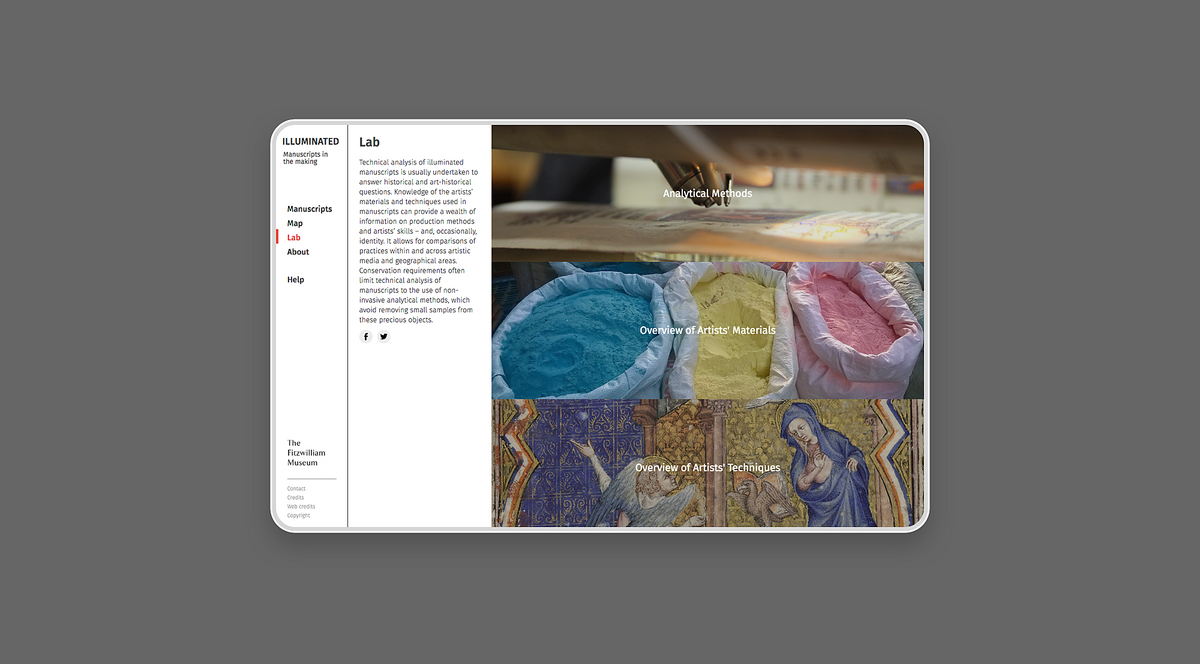
Related
Art UK
Harnessing technology to democratise the UK’s public art
DIVA Museum
Discovering the art of elegance and innovation at the DIVA Museum, where Antwerp’s rich jewelry heritage meets contemporary brilliance